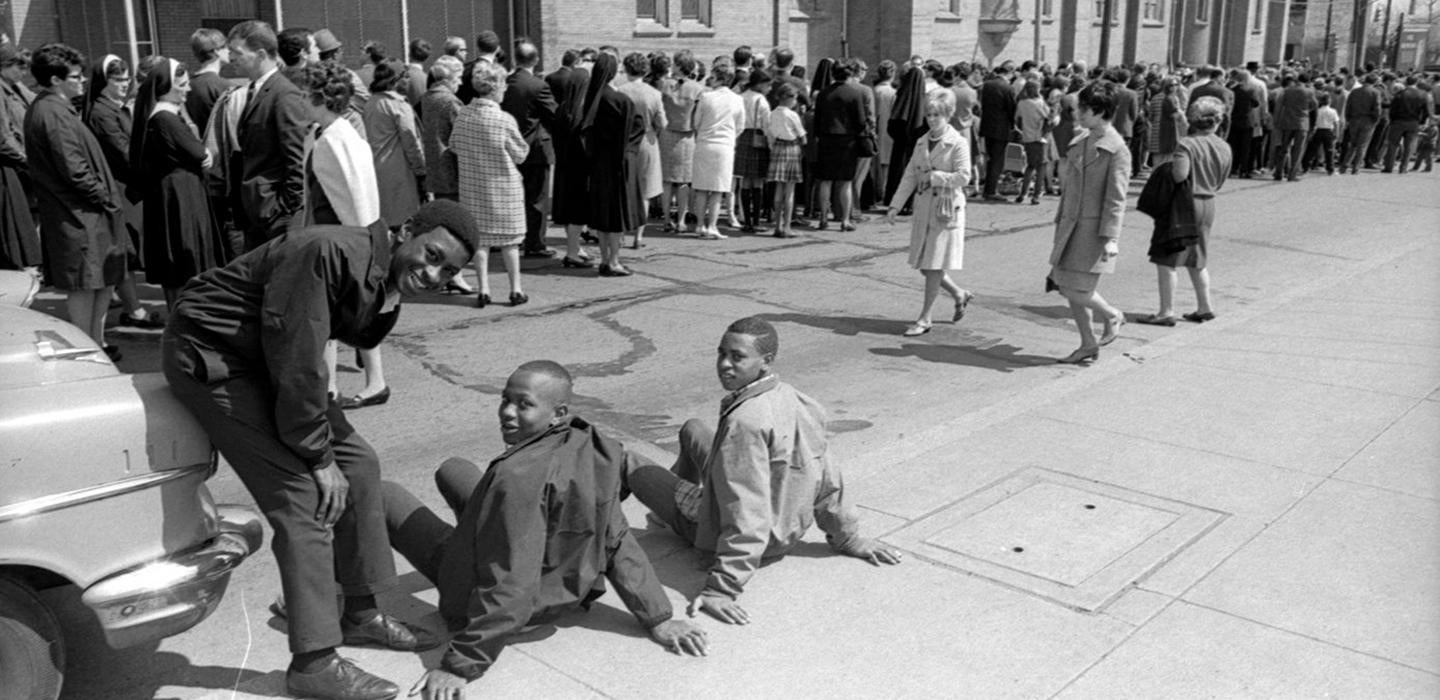
Subscribe to Pittwire Today
Get the most interesting and important stories from the University of Pittsburgh.Researchers from all walks of life delve into the University Library System (ULS) archives that illuminate Pittsburgh’s rich Black history, poring over materials documenting African American culture, neighborhoods, music, civic projects and prominent individuals.
Visiting the archives
Call Archives & Special Collections at 412-648-3232 for an appointment or stop by weekdays between 9 a.m. and 4:45 p.m. at the Library Resource Facility, 7500 Thomas Blvd., Pittsburgh, PA 15208. Online search is accessible at the Archives & Special Collections page.
And while only a fraction of the content is available online, ULS is digitizing more and more of the papers, photos and other items within its robust collections. As they gradually go online, everyone from teachers planning Black History Month lessons to students working on a school project or thesis will gain easier access to the materials.
All of the collections are stored at the climate-controlled ULS Library Resource Facility in Pittsburgh’s Point Breeze neighborhood, and all are available for researchers to use in person.
The boxes house records from the Kingsley Association settlement house that date back to 1894, thousands of photos from the Pittsburgh City Photographer Collection that reflect the city’s cultural diversity, the robust holdings of the K. Leroy Irvis Papers, and much, much more.
Teachers tour a wealth of resources
Recently, the Allegheny Intermediate Unit invited the ULS to convene an all-day workshop titled “African American History: A Pittsburgh Lens” for 13 K-12 public school teachers. The goal was to introduce them to a number of online resources held by the ULS or elsewhere to help develop lesson plans and activities during Black History Month.
Eight ULS archivists and specialists presented various sections to the group, showcasing records that illuminate Pittsburgh’s transformation from a frontier village to a booming industrial city in the 19th century; early activism and the anti-slavery movement; early Black intellectuals; the steel industry that attracted Blacks to this region from the South; housing, the birth of the Pittsburgh Courier newspaper and more.
The Urban League of Pittsburgh Records served as one example.
"The Urban League records reveal the cramped and overcrowded conditions of company-provided bunk houses where African-American migrant industrial workers were expected to live and sleep," said Ed Galloway, associate University librarian for archives and special collections.
Other sections of the workshop featured Black sports in Pittsburgh, the significance of the Negro Leagues and Pitt student John Woodruff, who became an international sensation in 1936 after a Gold Medal-winning race at the Berlin Olympics.
Kathryn Miller Haines, associate director of Pitt’s Center for American Music, played music by Muddy Waters and discussed the lyrics. Teachers took a stab at writing their own blues verse. Pitt’s extensive Erroll Garner Archive reflects Pittsburgh’s rich jazz roots. Garner was born in the Hill District in 1921 and had an illustrious career, including composing “Misty,” said to be one of the greatest jazz ballads in history. Pitt graduate students who recently worked with the Garner papers created a blog about it. And earlier this year, audio recordings were added to the African American Jazz Preservation Society of Pittsburgh Oral History Project.
Another exercise for the teachers focused on the best way to read a photograph with photos from the Pittsburgh Peace March on April 7, 1968, within the Charles R. Martin Photograph Collection as examples.
Teachers were asked to encourage students to seek clues in the images to learn more about the events pictured — to focus on what the picture is “of” and what the picture is “about.” The “of” is the surface depiction, what’s in the image. The “about” is a more in-depth look at the photo, pulling in historical context and other aspects that might not be in the actual image.
It was all pretty impressive to Quaker Valley High School social studies teacher Jamol Reynolds, who is new to the area.
“I knew quite a bit of African American history from this area but it was great to get the additional information,” he said. “I work a lot with photos and video and audio clips so the photo analysis and song composition activities were really useful to me.”
A peek inside Pitt’s Frank Bolden Papers informed the teachers about Bolden’s career. The 1934 Pitt graduate worked for the Pittsburgh Courier and was sent overseas as its war correspondent where he embedded himself with Black troops. His articles appeared in Black newspapers across the country.
ULS staff also suggested lesson plans for the teachers based on what they had seen.
“We were very excited to offer this workshop,” Galloway said. “We hope it bears fruit, and we would love to do it again.”
Meanwhile, the work continues on processing many recently acquired collections, including the papers of the Kuntu Repertory Theatre, donated by its former director Vernell Lillie.
Other new materials that just opened for research use include the papers of noted writer and commentator Bebe Moore Campbell, a Pitt alumna, and the papers of Bob Johnson, who founded the Pittsburgh Black Theatre Dance Ensemble and served as a Pitt dance and drama lecturer.




